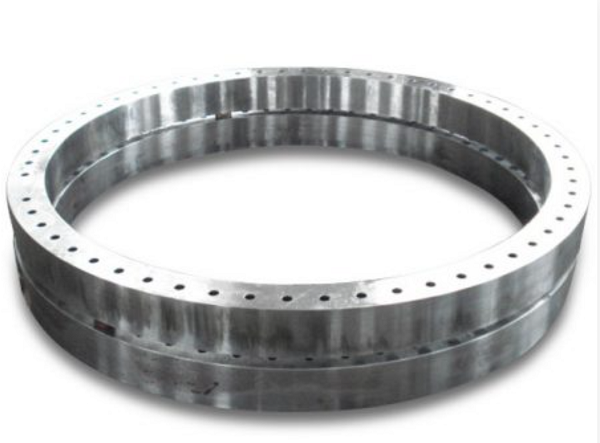Views: 91 Author: Site Editor Publish Time: 2023-08-17 Origin: Site

A forged rolled ring is a type of metal component that is commonly used in various industries, including aerospace, automotive, oil and gas, and more. It is manufactured through a specific metalworking process called ring rolling, which involves shaping a metal blank into a ring-like geometry with desired dimensions and properties.
Here's how the process generally works:
Material Selection: The process starts with selecting the appropriate material, which is often a metal alloy like steel, stainless steel, aluminum, or titanium. The choice of material depends on the application's requirements, such as strength, corrosion resistance, and temperature tolerance.
Preform Preparation: A circular metal blank, also known as a preform or donut, is prepared. The preform is usually produced through processes like open die forging or hot rolling. The preform's dimensions are chosen based on the desired final ring size.
Heating: The preform is heated to a specific temperature to make it more malleable and easier to deform. The temperature chosen depends on the material's properties and the desired ring geometry.
Ring Rolling: The heated preform is placed between two rollers, one of which is stationary while the other rotates. The preform is then gradually pushed between the rollers, causing it to deform and take on a ring-like shape. This process is usually performed in multiple stages to achieve the final dimensions and properties.
Sizing and Finishing: After the initial ring rolling process, the forged ring might undergo additional operations to achieve the desired size, shape, and surface finish. These operations could include piercing, stretching, and machining.
Heat Treatment: Once the ring has been formed to the desired shape, it may undergo heat treatment to enhance its mechanical properties, such as strength and hardness. Heat treatment involves controlled heating and cooling processes.
Inspection and Testing: The forged rolled rings undergo thorough inspection and testing to ensure they meet the required quality standards. This can include non-destructive testing methods like ultrasonic testing, magnetic particle testing, and visual inspection.
Forged rolled rings offer several advantages, including:
Strength and Durability: The forging process aligns the metal's grain structure, resulting in improved strength and durability compared to cast components.
Uniformity: Ring rolling produces components with consistent wall thickness, minimizing potential weak points.
Reduced Waste: The process is known for its efficiency, as it minimizes material waste compared to traditional machining processes.
Customization: Forged rolled rings can be tailored to specific applications by selecting appropriate materials, sizes, and geometries.
Cost-Efficiency: Despite the initial setup costs, the efficiency of the process and the quality of the resulting components can lead to long-term cost savings.
Overall, forged rolled rings are critical components in various industries where strong, durable, and precisely shaped parts are required to withstand demanding conditions.